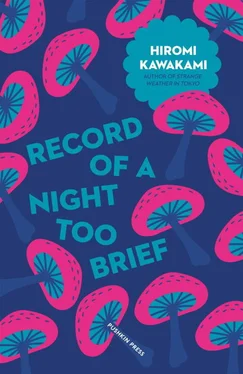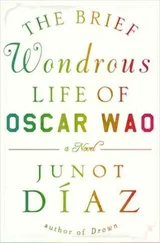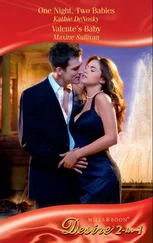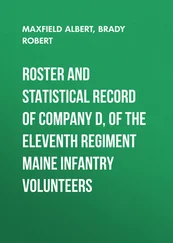“I’m driving to Kōfu today. Do you want to come along with me, Miss Sanada?” Mr Kosuga asked.
I occasionally accompanied him in the van on his deliveries, but only to places nearby. Kōfu. That was going to be miles.
In recent days Nishiko had been threading dozens and dozens of the prayer beads for the followers of the Pure Land sect. Yesterday we had put the two hundred rosaries and bracelets she had finally finished into boxes, and packaged them up. Today, it appeared, we’d be delivering them to Ganshinji Temple.
“After we drop the beads off, we could take a detour and go on to Isawa hot springs,” said Mr Kosuga. He just came out with this. And then, immediately, this: “Why not come too, Nishiko? Take a little break from the shop…”
Nishiko smiled, and didn’t reply.
Although over sixty, Nishiko looked younger, her hair black with only a few strands of white—and in fact she looked considerably younger than her husband, despite being, I’d been told, eight years older than he was. A few weeks after they hired me, I learnt that she had once been the wife of the young master of a long-standing prayer-bead shop in Kyoto, and Mr Kosuga had been the live-in apprentice. Watching her toiling ceaselessly noon and night—threading prayer beads, keeping the shop running—while her husband hardly came in at all, preferring to fritter away his time on other pursuits, Mr Kosuga fell in love with her, and several years later, on finishing his apprenticeship, he persuaded her to run away with him.
The story of their elopement was common knowledge to most of the customers—mainly Buddhist priests who had been clients for years—and the couple were still the target of teasing remarks because of it.
“Such connubial bliss,” the priests would declare dryly.
At this, Mr Kosuga would mutter namandabu namandabu under his breath, while Nishiko would say nothing and smile. Despite Nishiko’s reputation as one of the most skilled prayer-bead makers in the whole of the Kantō region, the Kanakana-Dō was only limping along. The couple had had to flee all the way up to Tokyo, far away from all previous ties, as a consequence of their past.
“I stepped on a snake,” I said to Mr Kosuga, casually. We were in a diner in a motorway service area, on our way back from the temple, drinking iced coffees.
“What?” Mr Kosuga yelped. Then, carefully, he asked, “And… what did the snake do?” He brought a filterless Peace cigarette to his mouth, and slowly started rubbing his forehead and temple, where the hair was receding, with the palm of his hand.
“It got up and walked off.”
“Where to?”
“I’m really not sure.”
It was late afternoon and the light of the setting sun streamed into the diner. The muffled roar of the traffic outside could be heard intermittently.
The chief priest of Ganshinji Temple, whom we’d delivered the prayer beads to, was a serious collector of antiques, and everywhere in his living quarters was decked with pieces of valuable pottery—Shigaraki, Shino—as well as other wares and antique display shelves. For three hours we were subjected to a long series of stories on the history behind every object. Even during a brief moment when the priest’s wife, who seemed in some vague way to look like her husband, brought in trays of soba for lunch, the priest continued to spout forth on how each of the pieces had fallen into his hands. Please, do eat, his wife urged gently, or your soba will go soft. But the stories were flowing so continuously it was difficult to judge the right moment to begin. Mr Kosuga managed, nodding attentively and murmuring “oh” and “ah”, to polish off what was on his tray, and I tried my best to do the same, but I couldn’t make a dent in mine. Finally, the priest applied himself to his food, a brief respite ensued, and I seized the small cup to dip a few noodles and bring them to my mouth—but the sight of the cup set the priest off again. “Ah, that cup now…” The chopsticks, the dipping cups, the teacups, the lacquer coasters, the low tables on which the coasters lay, even the cloth of the cushion on which I sat—everything had a story.
After listening to a story about an Edo-period criminal who was executed by a beheading followed by a story about a son who built a storehouse for his parents out of filial loyalty followed by a tale about a big man about town who was elected mayor followed by a story of a wealthy patron of a sumo-wrestler stable who fell on hard times and couldn’t afford even to live in a hovel built on the ground followed by a tale about an ill-natured woman who scalded herself followed by a story about a dog who dug up some gold coins in a vegetable patch followed by a tale about a widow who made a fortune by inventing a special cup for people unable to get out of bed… finally, when the priest had seemingly told his fill, Mr Kosuga rose and proceeded serenely out to the van, unloaded the boxes containing the two hundred rosaries and bracelets of prayer beads, brought them in and laid them out in front of the priest, and, when he received the payment, tore off a receipt with care and handed it over. The figures on the receipt had been transcribed in the traditional Chinese numerals. Nishiko wrote out all the shop’s formal documents in her impressive calligraphic hand.
“Incidentally,” the priest said to Mr Kosuga in a relaxed tone, folding up the receipt, “know any stories about snakes ?”
At that precise moment, the priest’s wife entered the room. It seemed the priest had to get ready to attend a memorial service.
“Lots of snakes are turning up at the temple these days,” the priest drawled. “It’s all the land reclamation, even out here in the sticks. Seeking refuge, you know.”
Right there in front of Mr Kosuga and me, he started to remove the strip of black brocade draped around his neck.
“And snakes ,” he continued, emphatically, “often pretend to be what they’re not.”
The priest slipped an iridescent blue surplice over his head, put on a gold hat, and, pressing his lips together as if he’d eaten something tart, smirked.
Mr Kosuga took his leave and I followed, bowing our thanks deeply, and the priest’s wife came out and bowed farewell as we drove away.
This was what had inspired me to mention my snake story to Mr Kosuga.
“Miss Sanada, do you mind telling me what the snake was like?”
The distant honk of a truck sounded, like the foghorn of a ship. We could have been sitting in a beachfront cafe.
“It was medium-sized. And soft…”
A slightly hapless look crossed Mr Kosuga’s face, but he said nothing more and, giving his broad brow one more rub, got up to leave. In the van he switched on the radio. The stock-market report came to an end, and a lesson in Portuguese started, but by then I was feeling quite drowsy, and all thought of the snake left me. When we arrived back at the shop, we were in the middle of an English lesson.
I returned to my apartment, cutting back through Midori Park in the dark, to find everything tidied and put away. An unfamiliar woman in her early fifties was sitting in the middle of the carpet in the room.
It was the snake, I saw immediately, but I didn’t let on that I knew.
“Welcome home,” the woman said to me, as if I wasn’t expected to register any surprise.
“Thank you,” I replied.
The woman got to her feet and went to the stove in the small galley kitchen. She lifted the lid off a saucepan and a delicious aroma wafted out.
“Hiwako, dear, I’ve prepared a favourite of yours. Tsukune dumplings in broth,” she said. She bustled about the kitchen and wiped the table with a damp cloth.
I watched as she, clearly clued up on which utensils I use and which are reserved for guests, set the table, placing chopsticks alongside rice bowls, not needing to ask which end of the table I prefer. She was acting like someone who’d lived here for years. In a matter of minutes, dinner was laid out: the dumplings, with green beans in the broth, and plates of okara and sashimi . She brought out two glasses, and opened a bottle of beer.
Читать дальше

![Хироми Каваками - Strange Weather in Tokyo [= The Briefcase]](/books/29150/hiromi-kavakami-strange-weather-in-tokyo-the-br-thumb.webp)



![О Генри - Недолгий триумф Тильди [The Brief Debut of Tildy]](/books/415353/o-genri-nedolgij-triumf-tildi-the-brief-debut-of-thumb.webp)






